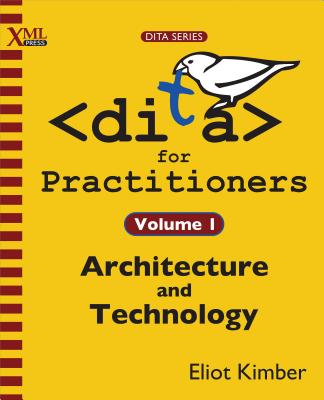
DITA for Practitioners Volume 1: Architecture and Technology
Description
DITA expert Eliot Kimber takes you inside the DITA XML standard, explaining the architecture and technology that make DITA unique.
Volume 1 of his two-volume exploration of DITA starts with a hands-on explanation of end-to-end DITA processing that will get you up and running fast. Then, he explores the DITA architecture, explaining maps and topics, structural patterns, metadata, linking and addressing, keys and key references, relationship tables, conditional processing, reuse, and more.
Kimber's unique perspective unwraps the puzzle that is DITA, explaining the rationale for its design and structure, and giving you an unvarnished, detailed look inside this important technology.
Inside the Book:
Where Do I Start?
- Background and history of the DITA standard
- Essential background for practitioners
- Terminology
End to End DITA Processing:
- Setting up your development environment
- Authoring, managing, and producing a DITA-based publication
- Running, configuring and customizing the Open Toolkit.
An Overview of the DITA Architecture:
- Vocabulary composition and specialization
- Maps and topics
- Structural patterns in DITA
- Linking and addressing
- The content reference facility
- Filtering and Flagging
- SubjectScheme maps
About the Author
Eliot Kimber is Senior Solutions Architect with RSI Content Solutions. He leads publishers through content management implementations, XML and desktop publishing applications, DITA requirements and standardization, and information and process analyses. He is fluent in XML, XSLT, XSL-FO, DTD development, XML Schema, XPath, XQuery, XInclude, Xlink, and other information management and publishing standards. As a member of the DITA Technical Committee at OASIS Open, he has been a leader in developing the DITA standard since its earliest days, and continues to be a driving force for the evolution and adoption of DITA.
